Affiliate disclosure: This post may contain affiliate links. Please see our Privacy Policy.
Ameraucana Chickens lay blue eggs! Need I say more? This top-tier foraging chicken is friendly, curious, and entertaining. A wonderful addition to a mixed flock, you can enjoy them for their plentiful eggs, as a table bird, or just to watch and enjoy as they explore their world.
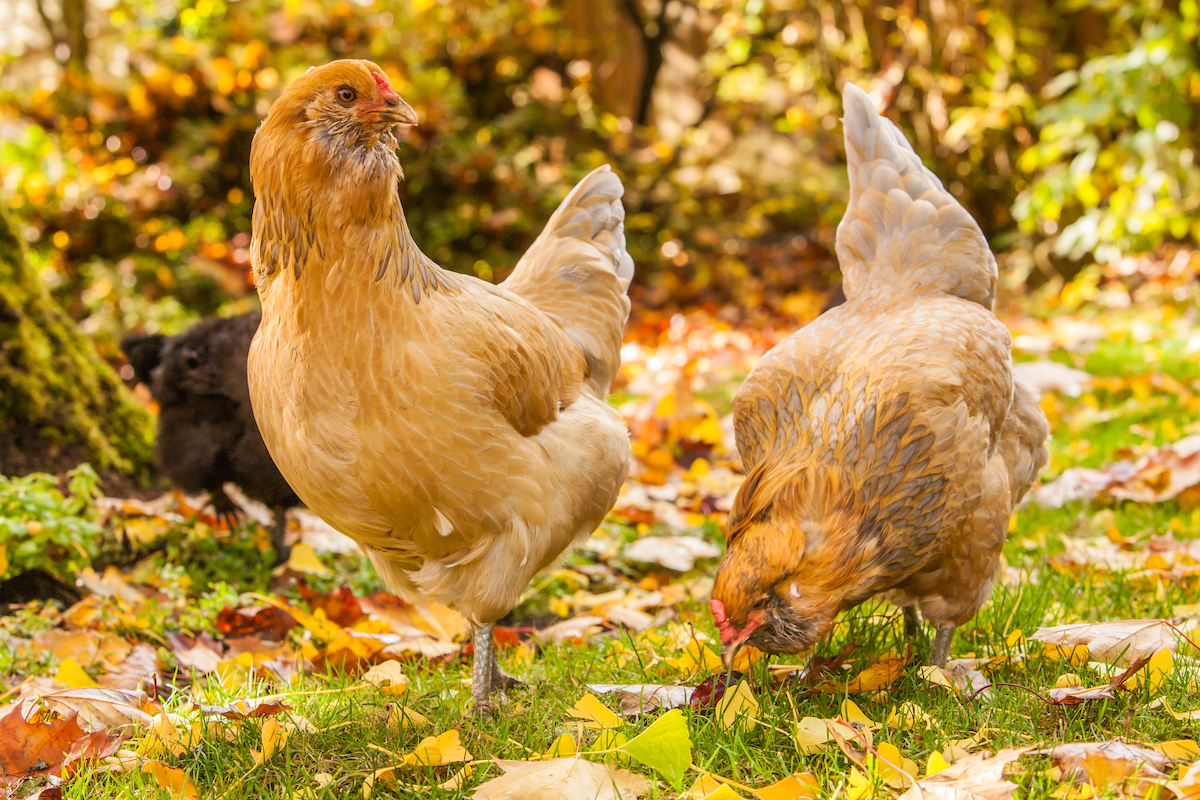
Table of Contents
- What are Ameraucana Chickens?
- Pros and Cons of Ameraucana Chickens
- Ameraucana Chicken Characteristics
- Ameraucana Breed Standard
- Temperament
- Hardiness
- Egg Production
- Egg Color
- Meat
- Broodiness
- Foraging Ability
- Cross Breeds
- Common Health Issues
- Tips for Raising Ameraucana Chickens
- Ameraucana Chicken FAQ
- Are Ameraucana chickens friendly?
- Are Ameraucana chickens good egg layers?
- What color egg does an Ameraucana lay?
- Are Ameraucana hens broody?
- How big are Ameraucana chickens?
- Are Ameraucana chickens good eating?
- Are Ameraucana chickens autosexing?
- Are Ameraucana chickens cold-hardy?
- How long do Ameraucana chickens live?
- Are Ameraucana chickens easy to raise?
- Chicken Breed Guides
This year, one of our main goals was to collect a rainbow of colors in our egg basket, so I started researching which chickens lay colorful eggs. Time and time again, I came back to Ameraucana chickens as the best choice for adding blue eggs to your egg basket.
We free-range our chickens, so the fact that they’re excellent foragers was also a big draw.
Lastly, ameraucana hens are usually used for breeding chickens that lay green eggs (olive eggers), when cross bread with a dark brown egg-laying chicken breed (like Barnevelder Chickens or Bielefelder Chickens). There aren’t any purebred chicken breeds that lay green eggs, so if we wanted to add those to our basket, we’ll need Ameraucana’s in the coop and a second generation of chicks.
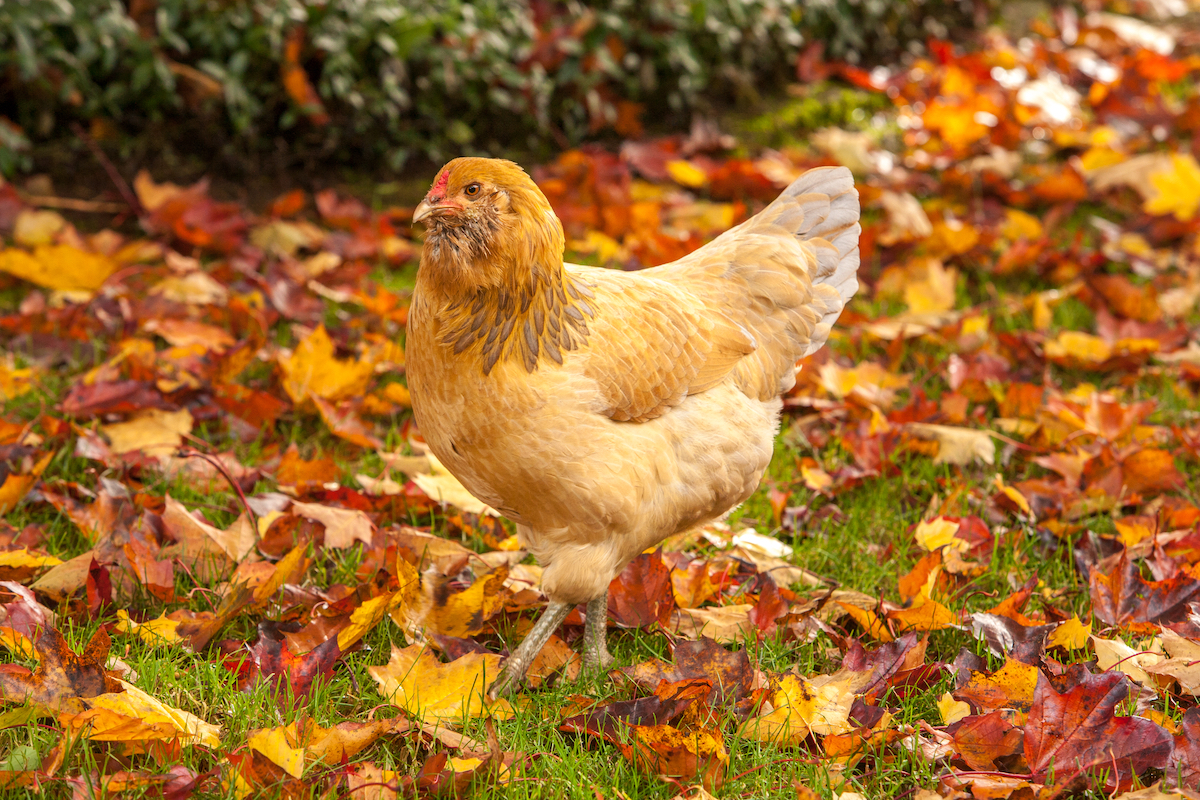
What are Ameraucana Chickens?
In the 1930s, Ward Brown Jr saw a painting of a chicken with blue eggs. Several decades and dozens of crossbreeds later, the Ameraucana chicken was born. The main line came from the Araucana—a chicken from Chile that occasionally laid blue eggs (but had a number of genetic defects that made it less than ideal).
By 1984, when they became standardized, the blue-colored eggshell had stabilized and is now considered normal for the breed. Ameraucana’s are a much healthier breed than their ancestor, the Chilean Araucana, and they lay more dependably too.
Ameraucanas are a u-shaped chicken with an upright tail and a sleek muff that blends into its beard. While there are 9 standardized varieties, the Black Ameraucana is by far the most popular.
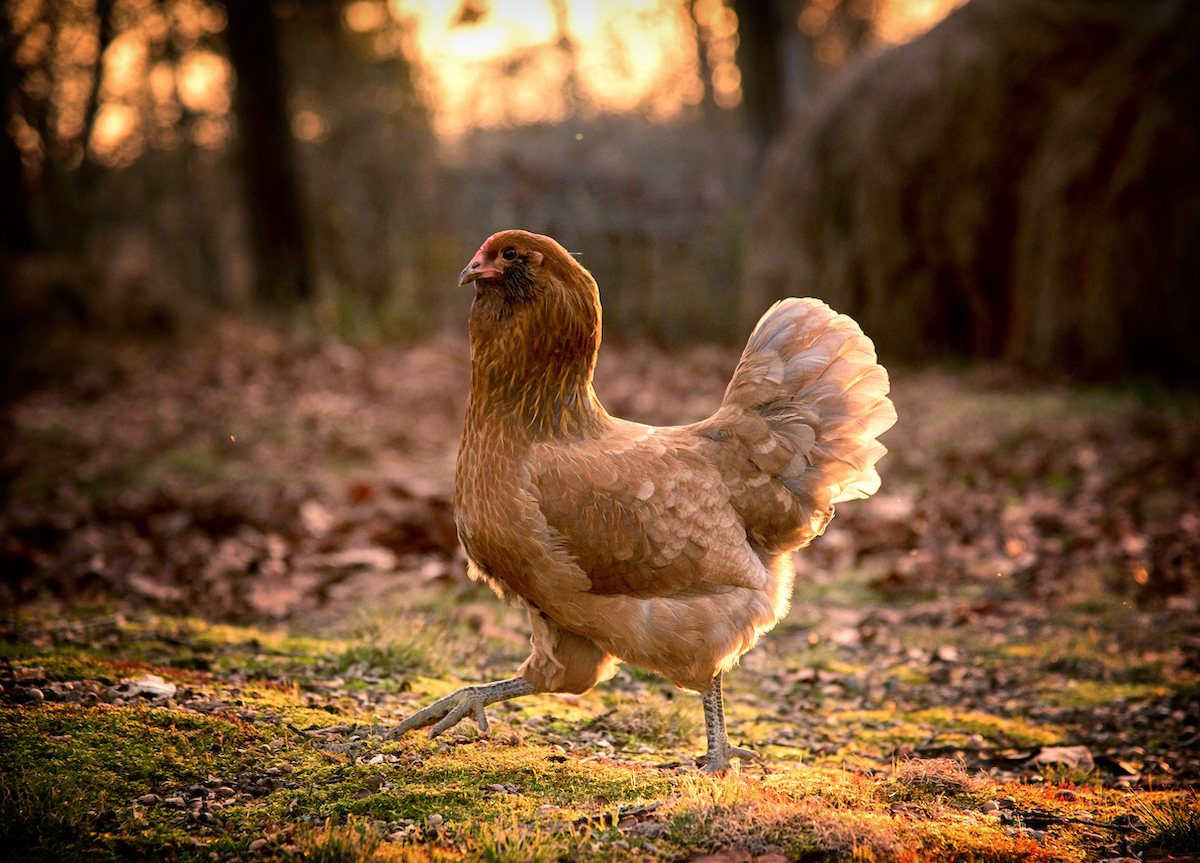
Pros and Cons of Ameraucana Chickens
We decided to add Ameraucana chickens to our flock, and we’re confident that the pros outweigh the cons, but I’ll let you decide for yourself:
Pros
- Excellent foragers
- Light blue eggs
- Cold and heat hardy
- Good layers
- Tender meat
- Docile and curious
Cons
- Do not enjoy being handled
- Less meat than average
- Hatched chicks prone to cross beak
Ameraucana Chicken Characteristics
Curious and energetic, you’ll want to keep an eye on these birds if you have a doggy door! Exploring is a passion for them, and their reactions to their world will leave you laughing. While they don’t like to be handled, they’re friendly and don’t startle easily.
With trim muffs and clean legs, they find themselves comfortable in any climate in any season. Many people raise them as dual-purpose birds as their foraging skills and lighter weight make them a low-cost option. Males will weigh in at about 6.5 pounds, and hens at about 5.5. But where they really shine is through their plentiful blue eggs!
- Breed Name: Ameraucana (Pronounced: UH-MEH-RAU-KAA-NUH)
- Breed Type: All Other Standard Breeds
- Temperament: Active and docile
- Size: Medium
- Eggs Per Year: 150-200
- Egg Size: Medium
- Egg Color: Blue with occasional green tints
- Lifespan: 7-8 years
- Time To Maturity: 5-10 months
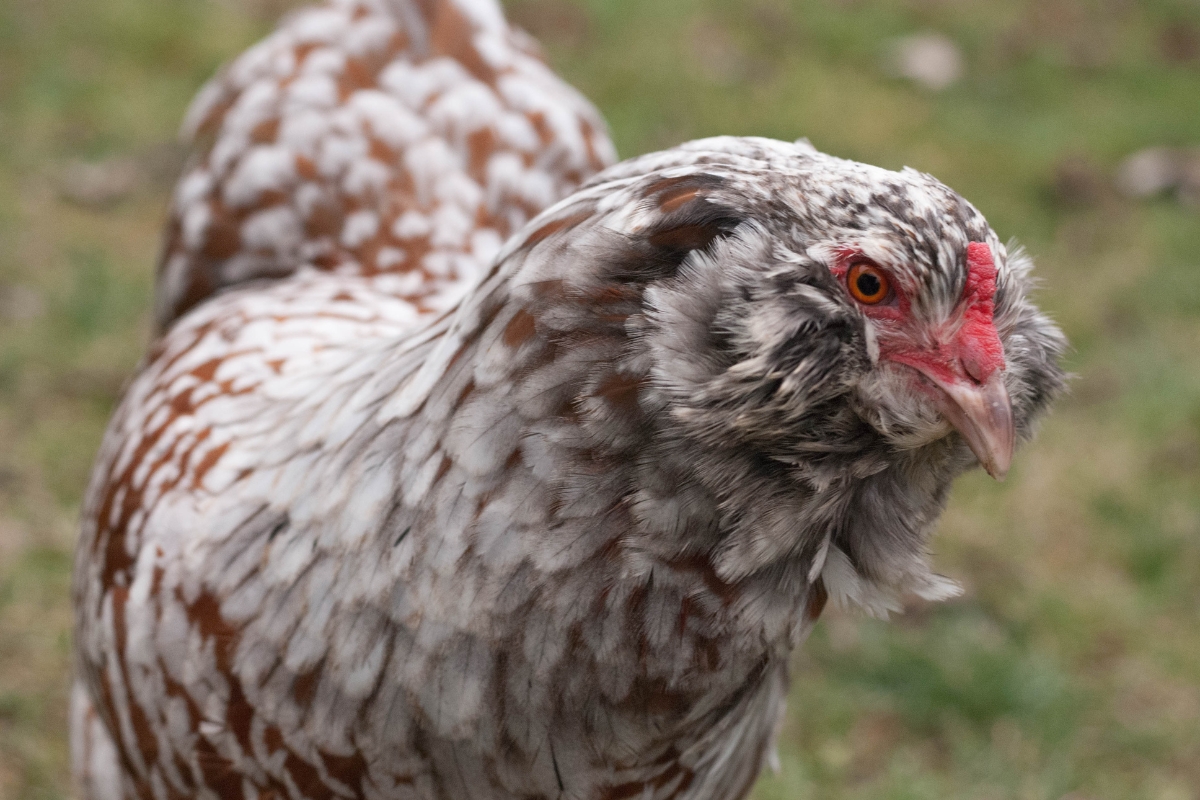
Ameraucana Breed Standard
You’ll be able to tell if you’re looking at an Ameraucana by the color of its eggs. While some breeds, like the Easter Egger chicken, also lay blue eggs, the Ameraucana is the only one that won’t have multiple egg colors in its clutch. Muffs, beards, and a pea comb all will help distinguish the Ameraucana over another breed.
Chicks in this breed are not autosexing, and you may not know your hens until they’re mature enough to lay—potentially up to 10 months old! However, males may begin to try crowing and will have longer neck feathers as early as 3 months old.
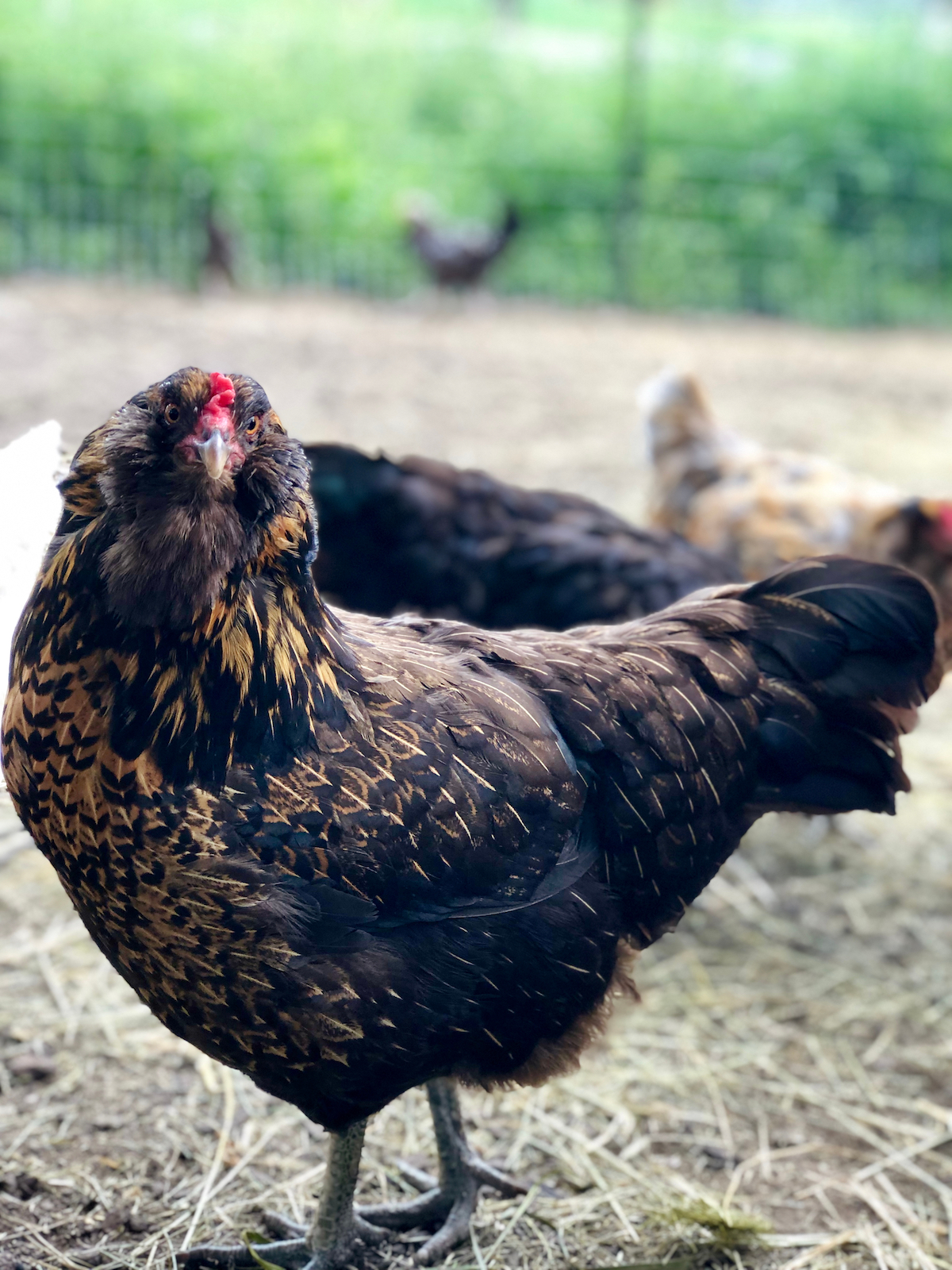
Temperament
Energy and an explorer’s heart define them, and they won’t handle extended confinement well.
Provided enough space to roam, you’ll find them a docile and friendly bird that will happily come say hello. They get along with flockmates and children but will begin to get flighty if picked up and handled.
Hardiness
With a short pea comb and clean legs, there’s no fear of frostbite in this breed. Their muffs and beards will help keep them warm in the winter, but aren’t full enough to cause trouble in warmer climates.
An all-around ready for any weather bird!
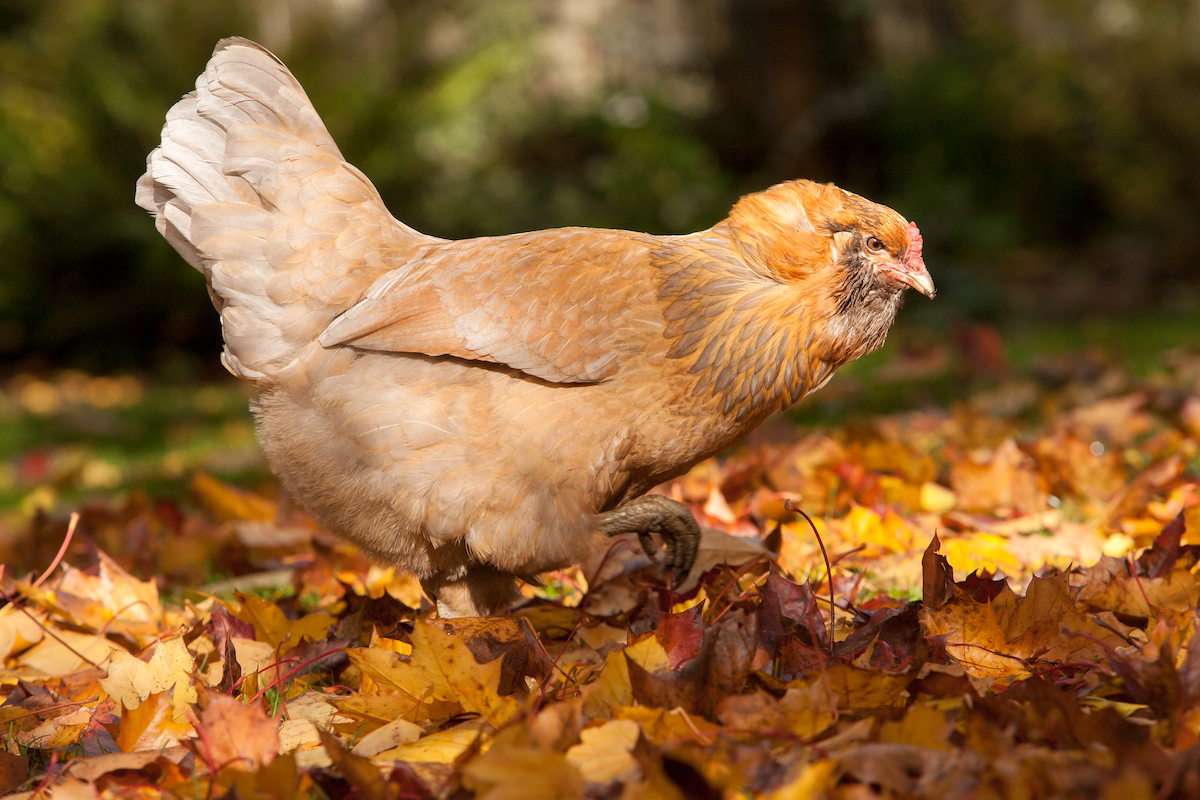
Egg Production
You’ll find they lay an average of 3-4 eggs per week during the egg-laying season. While they will lay less often during molting season, they will lay well into the winter if they’re well cared for.
Egg Color
A beautiful light blue egg is what you’ll find in your nesting boxes. Occasionally your eggs may be complemented by a few pale green-tinted eggs.
Meat
You won’t find an abundance of meat on Ameraucanas. But they’re such excellent foragers their feed costs are low enough to make them worth it.
While their meat is generally tender, owners report it’s most flavorful at about 14-16 weeks old.
Broodiness
Ameraucanas are not inclined to be broody birds. But, when they do hatch their eggs, your hens will become attentive and highly protective mothers to their chicks.
Foraging Ability
Top-tier foraging skills for these birds! You’ll find they stay alert and are predator savvy—this despite the beards that obscure a bit of their vision.
Foraging is a necessity for this breed and is something you should plan for rather than possibly offer to them.
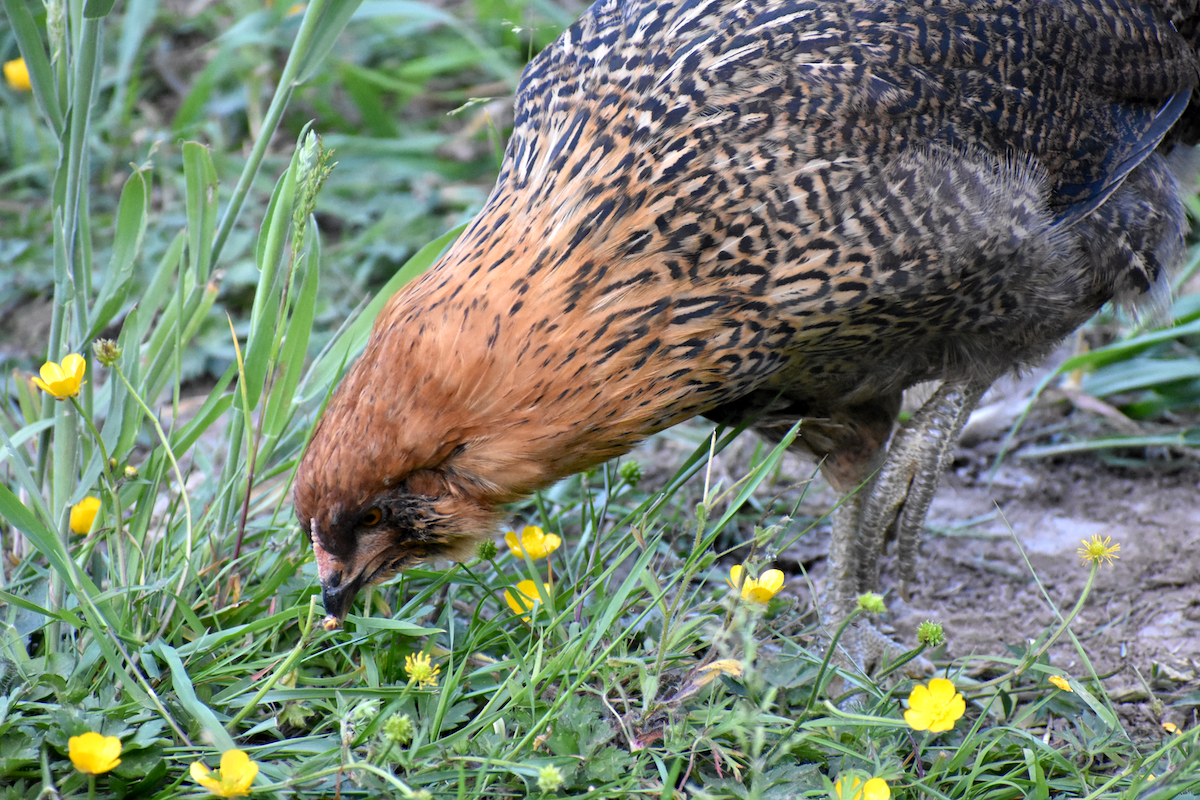
Cross Breeds
The majority of the heritage for Ameraucanas comes from Chilean Araucanas that were suspected to have some Dominique, Rhode Island Red, and Barred Plymouth Rock mixed in. After being brought to America, they were lightly crossed with several other breeds: Rhode Island Red and Barred Plymouth Rocks again, then Red Cuban Game, Silver Duckwing Game, Brahma, Cornish, Silver Spangled Hamburg, Ancona, and White and Brown Leghorns.
The goal of all these crosses was to maintain the blue eggshells while breeding out some lethal genetics inherent to Araucanas. They were successful, and Ameraucanas are quite healthy in general.
Common Health Issues
Like all chickens with muffs and beards, you’ll want to check them for lice and mites regularly.
If you’re raising your own Ameraucanas, be aware they are more prone to developing cross beak than other breeds. Cross beak (when the top and bottom portions of the beak become misaligned) will make it difficult for a chicken to eat and drink. Birds with this condition will be much higher maintenance.
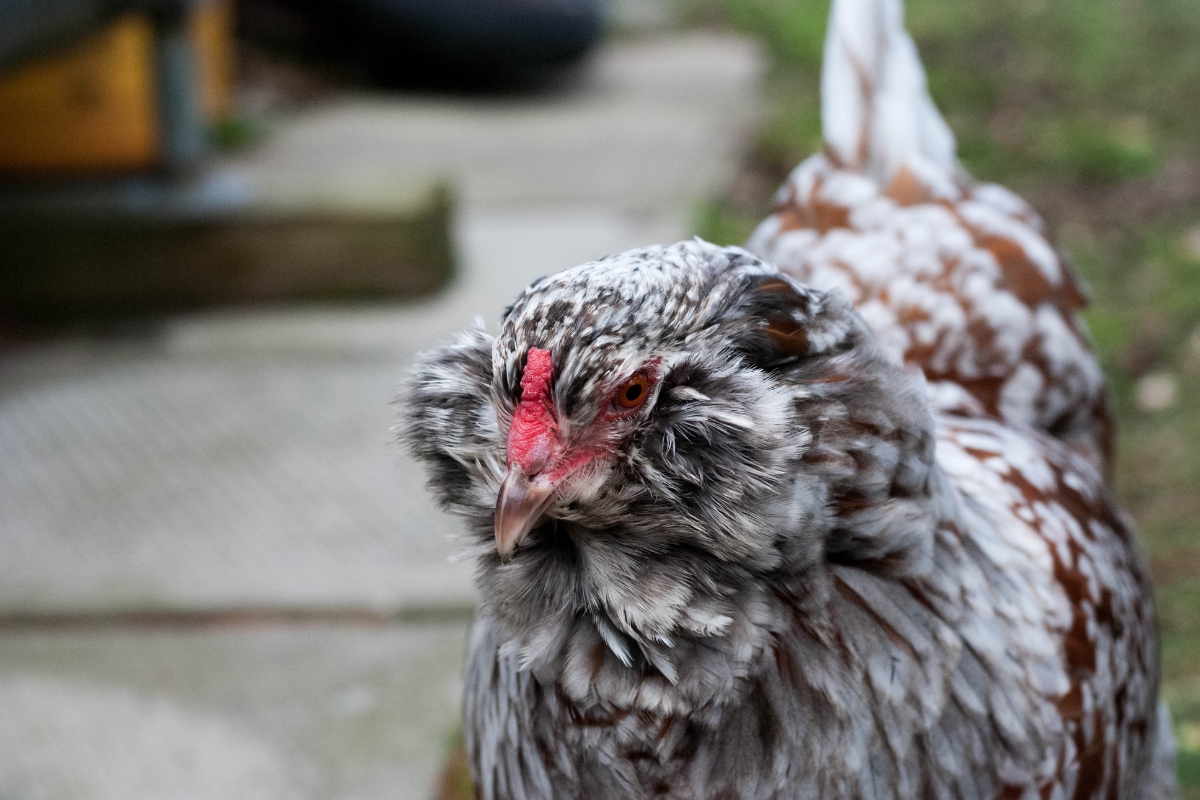
Tips for Raising Ameraucana Chickens
Space will be your biggest consideration when introducing Ameraucanas to your yard. They will want to be out foraging at least every other day and will not take well to longer periods of confinement. A standard 4 feet square of coop per chicken will serve them well. You could even get away with less if they can free range daily. If not allowed to roam, they will need at least 8 feet square.
In colder climates, you’ll want to make sure to provide a watering option that won’t get their beards wet. Consider something that’s raised off of the ground and won’t dribble too much.
Standard feeding regimens will suit them well, though during their molting season you’ll want to increase their protein intake up to 20%.
Ameraucana Chicken FAQ
You can find a few more questions and a quick review below!
Are Ameraucana chickens friendly?
They are friendly and enjoy getting to explore with their humans or flock mates. However, they don’t take handling well and can become flighty if picked up too often.
Roosters in this breed are polite and not prone to aggression. Though owners have reported, this is heavily dependent on the individual chicken and its environment.
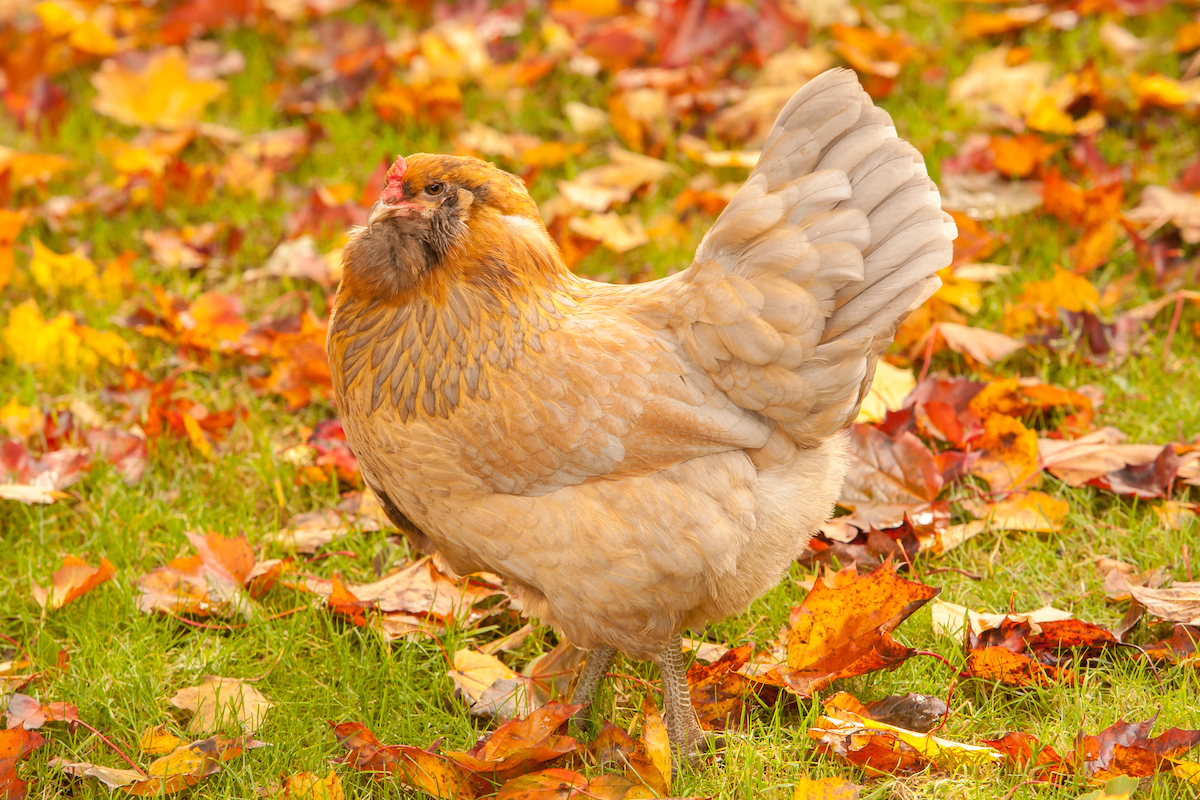
Are Ameraucana chickens good egg layers?
About 3-4 eggs per week will find their way into your nesting boxes. While some hens can lay up to 200 eggs per year, you’ll be more likely to receive closer to 150.
What color egg does an Ameraucana lay?
A beautiful light blue egg is the hallmark of this breed. Occasional eggs will come out with a pale green tint to them, which if anything, adds to the charm!
Are Ameraucana hens broody?
Not particularly. You might have the occasional hen that will brood, and if she hatches chicks you’ll find she is an attentive parent.
How big are Ameraucana chickens?
Medium sized, your hens won’t likely weigh more than 6 pounds and your roosters will grow to a max of 7.
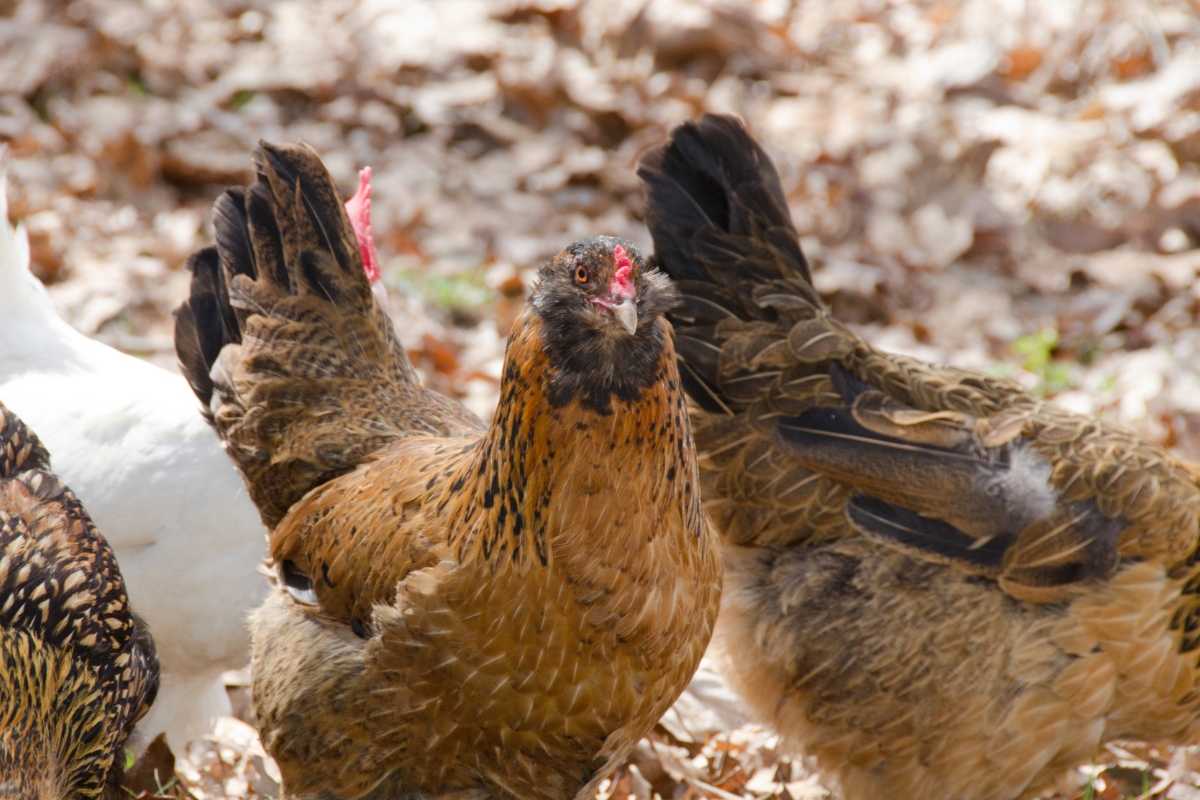
Are Ameraucana chickens good eating?
They have oh-so-tender meat! So while there isn’t much of it, you’ll find them a tasty and cheap chicken to raise for the table because they’re such excellent foragers.
Are Ameraucana chickens autosexing?
No, they are not. You may even find it difficult to tell your chickens apart until the hens start laying, anywhere from 5-10 months old.
Are Ameraucana chickens cold-hardy?
Cold has no hold on these birds! Provide them with a way to drink water without getting their beards wet, and you’ll be set for the colder months.
How long do Ameraucana chickens live?
On average, they will live 7-8 years long. While it can take some time for hens to mature (up to 10 months!), you can expect at least 4 years of eggs once they start laying. Hens will reach their sunset years and stop laying anywhere from 5-7 years old.
Are Ameraucana chickens easy to raise?
Yes, but with a caveat: if you’re hatching your own eggs your chicks will be prone to cross beak. If a chick has genetic cross-beak issues (from the way the egg formed, for example) it will be apparent once they are free of their shell.
Like all chickens, they will need proper housing and care. As foragers, they likely will seek out most of their food on their own. Make sure chicks have regular access to a 20% protein mash until 16 weeks. From there you can drop down to a 16% protein during most of the year. Ameraucanas will usually molt in autumn and will need access to a 20% protein diet during this season.
Chicken Breed Guides
Looking for more chicken breed guides?
- Salmon Faverolle Chickens
- Barnevelder Chickens
- Jersey Giant Chickens
- Bielefelder Chickens
- Orpington Chickens
- Marans Chickens
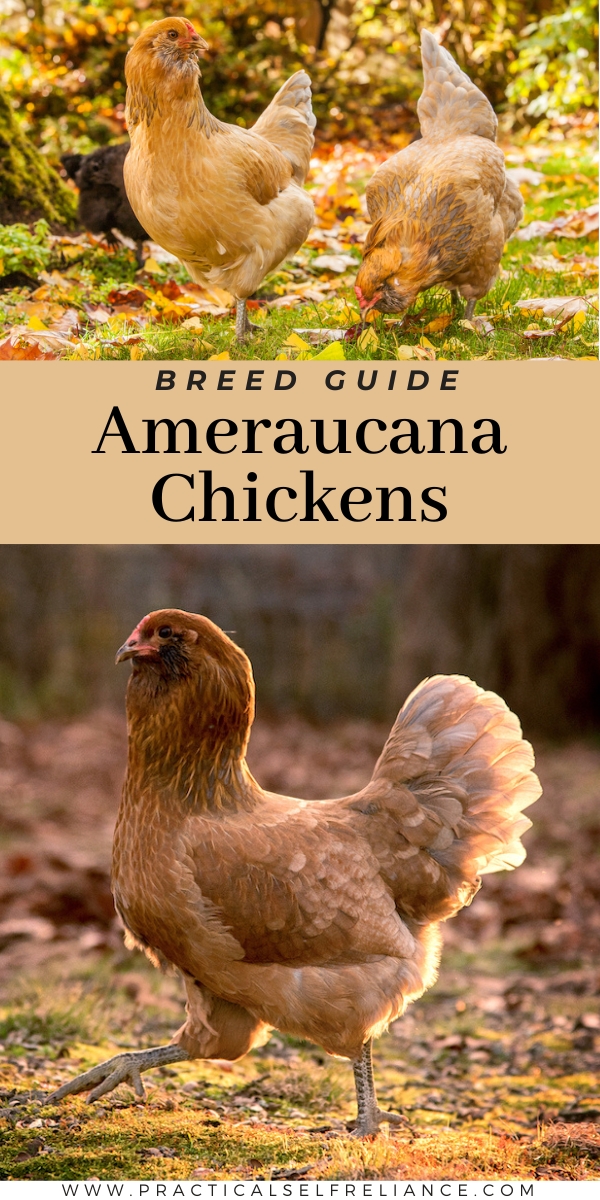

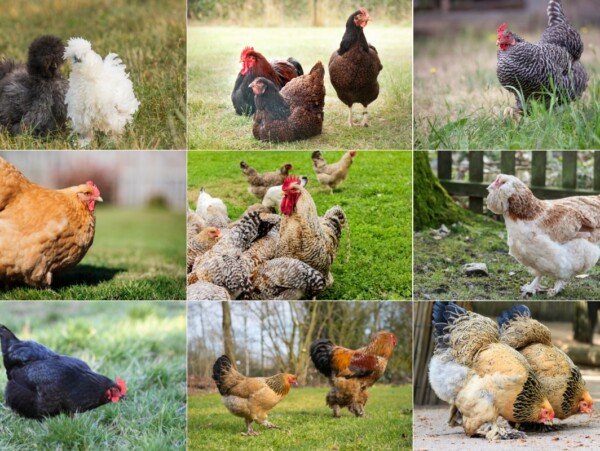
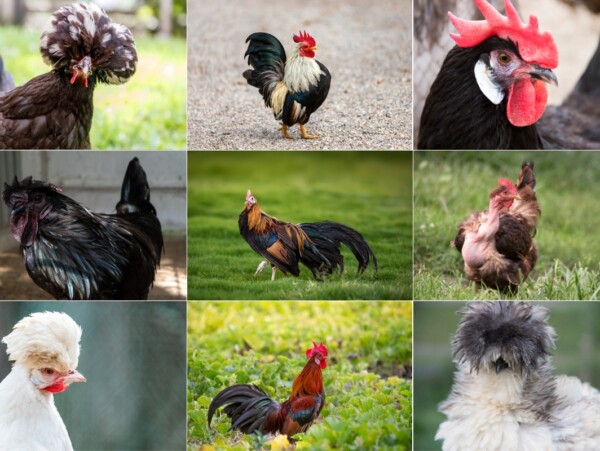
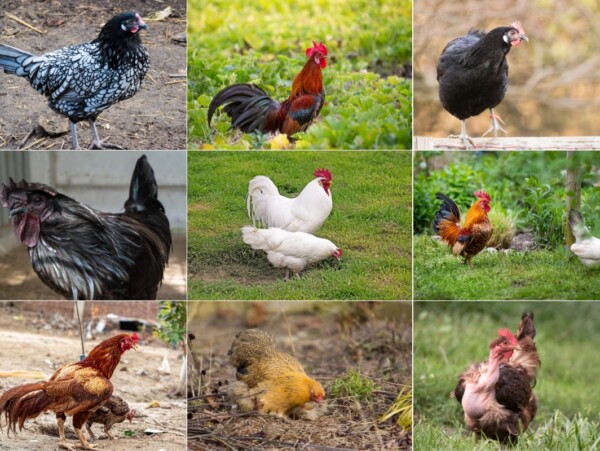
My 12 week old pullets and cockrels came from McMurray Hatchery. We ordered 19 chicks and were supposed to get a free surprise chick for a total of 20. We have only ever had 19…not 20. Missing my one Buff Orpington female I wanted as a brooder. They did give us a surprise chick though and I’m just beginning to figure out what it is. It’s either an
Easter egger or Ameraucana….judging from pictures and these comments, as well as McMurray’s statement. We ordered 3 male black jersey giants and at first thought this was one of them, so I believed it was a male. Extremely friendly and LOVES to be held. Has a small pea comb, no wattles and never makes a sound. So I’m thinking it must be a female….hmmm, so I’m calling her Liza Jane and sometimes Baby Jane, she’s quite small. But this one exhibits cockrel attitudes especially toward other cockrels. Still, no sounds….until this morning. Everyone was out of the coop except Liza Jane sitting on a roost and I heard a loud crow. Really?? All kinds of thoughts and feelings ran through me….so I have no idea and can hardly wait to see if she ever lays an egg. She is shiny black with greenish hues, like the Jersey Giants and her leg color looks like the Giants No wattles, but now she’s growing muffs and a beard. She love to forage…stays outside the coop hunting, while everyone else goes inside. She loves being handled and usually she comes to me and stands so I can easily pick her up. She might make a little fuss if I pick her up when she doesn’t want to be bothered. Any idea? Am I on the right track here? McMurray doesn’t keep track of the surprise chicks they add to orders so they’re no help
The coloring definitely sounds like a Jersey Giant.
Thanks for sharing. Here is an article from Murray McMurray on Ameraucanas. https://floridareptiles.us/ameraucanas.html This hatchery has actually been breeding Ameraucana chickens since before they were admitted into the Standard of Perfection by The American Poultry Association. It also specifically states in their description that they come in a combination of colors and color patterns. There is no concern for backyard chicken keepers to be confused because they can be assured that they are getting the qualities that they are looing for in egg and meat production when they purchase from a reputable hatchery.
Just like a previous commenter stated these are not pure bred Ameraucanas you have pictured. Please do not quote McMurray hatcheries as if you went to the APA and Ameraucana Breeders club you will see these are not recognized colors. Your pictures are of Easter Eggers or “Americanas”.
As a heads up, NONE of the birds pictured in this blog are Ameraucanas the Purebred APA recognized breed. Ameraucanas only come in very specific colors, the legs are slate or black and the bottom of the foot pad will be white or pink.
They come in SOLID colors (other then Silver and current Ermine projects). They will be primarily blue, black or splash, buff, white, lavender or self-blue, and silver.
All the birds featured here are pretty but they will confuse the heck out of backyard keepers because they’re EASTER EGGERS, cross breeds that will lay blue, blue/greenish, green or sometimes tan or pink because the often carry only one copy of the dominant gene that makes egg shells blue instead of white.
A good rule of thumb is if it has a really cool feather pattern, mixed colors or green or yellow legs it’s an Easter Egger. And even if it is a solid color and has pink or white foot pads it could still be an Easter Egger. If someone is showing their Ameraucanas at recognized APA shows that’s a good check for purebred birds. If someone spells it Americana that’s an Easter Egger named by hatcheries intentionally trying to mislead people for profit.
Calling an Easter Egger an Ameraucana is like calling a labradoodle a poodle because it’s got the same kind of hair.
Please don’t write articles about breeds when you don’t know what the breed standard is, or what you’re labeling as purebred.
Thanks for sharing. Here is an article from Murray McMurray on Ameraucanas. https://www.mcmurrayhatchery.com/ameraucanas.html This hatchery has actually been breeding Ameraucana chickens since before they were admitted into the Standard of Perfection by The American Poultry Association. It also specifically states in their description that they come in a combination of colors and color patterns. There is no concern for backyard chicken keepers to be confused because they can be assured that they are getting the qualities that they are looing for in egg and meat production when they purchase from a reputable hatchery.
I used to get some of those beautiful blue eggs from a lady I worked with. I told her that she could be getting a premium for thos blue eggs, so , she started charging me an extra dollar a dozen!
Ha! That’ll teach you =)
But in truth, ameraucanas forage better than most breeds, and the nutrition in each egg is directly related to the diet of the chicken that lays it. That means those ladies are packing those eggs with extra omegas and nutrients, assuming they have the opportunity to forage. Blue or not, they’re worth it.